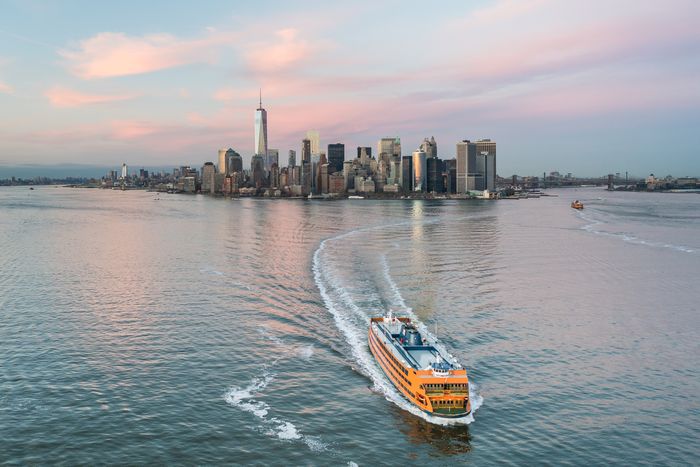
It goes without saying that New York City, built on a cluster of low-lying islands, will need to be reimagined and rebuilt in order to survive the climate crisis. The galaxy-brain proposal from Rutgers economist Jason Barr in a New York Times opinion piece published today calls for an entire neighborhood, dubbed New Mannahatta, to be constructed off of lower Manhattan. This, in his view, would address both the affordability crisis and the climate crisis. Build a new floodplain across stretches of the Hudson and East Rivers, and fill it with 178,282 units of new housing? What could possibly go wrong?
As we saw during Superstorm Sandy, low-lying lower Manhattan is particularly prone to flooding, and the razing, lifting, and rebuilding of East River Park is the first of what will have to be many large-scale infrastructure projects to help protect it from future flooding. (Of course, it has been a contentious mess from the get-go.) Barr’s Long Manhattan could help save parts of Manhattan from flooding, like the Financial District. The new 1,760-acre peninsula that would extend off the tip of the original Manhattan landmass “would push vulnerable places like Wall and Broad Streets further inland.” By wrapping part of the way up both the East and West Side, it would put neighborhoods like Two Bridges more inland too. But mostly, the new neighborhood would provide a bulwark of mixed-income housing that would house nearly a quarter-million people between the New York Harbor and the Financial District. Long Manhattan would essentially protect places like the Stock Exchange, where zero people live.
Barr’s proposal does call for “building the land at a higher elevation” (but does not offer any topographical details beyond that), and includes the construction of a necklace of wetlands along the new waterfront, which would in theory absorb future storm surges. This is really the only good idea in the entire scheme (aside from extending the G train): Truly, the only thing that we should be building onto the edge of Manhattan are wetlands, marshes, and other soft-edged shoreline habitats, which are the best flood-protection technology around. Long Manhattan tries to pass itself off as a Big Idea of the future. But as many have pointed out, it has far more in common with the various misguided plans to pave over the Hudson and the East River. There’s even a plan from 1911 to extend the borough so that its southern point stretches all the way to Ellis Island — an even longer Manhattan than Barr’s Long Manhattan proposal. During the 1930s in particular, when a plan to cap off the Hudson with a dam was proposed, the federal government had a thing for such massive, landscape-altering projects: building dams, channelizing rivers, filling in marshes, and doing lasting environmental damage in the process.
But the closest counterpart to Barr’s New Mannahatta that actually exists in the world are the landfill neighborhoods that Robert Moses constructed out of mounds of trash along the Jamaica Bay waterfront. How have those fared over the years? Queen’s Broad Channel — with its houses on stilts extending over marsh-grass-dotted shallows — is arguably the most flood-prone neighborhood in the city, and has the highest proportion of repeat flood-insurance claims.




